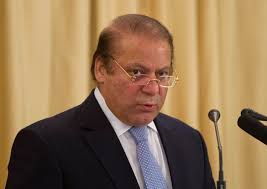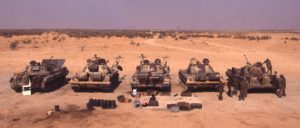 The September 18 attack on the Uri military camp, launched by Pakistan-based terrorists, has agitated the entire country and ignited serious, high-decibel debate as to how these repeated provocations need to be handled by the leadership.
The September 18 attack on the Uri military camp, launched by Pakistan-based terrorists, has agitated the entire country and ignited serious, high-decibel debate as to how these repeated provocations need to be handled by the leadership.
Pakistan’s no-cost grand strategy
Being part of a series of terror attacks on Indian military encampments in J&K whose pace has picked up with the onset of the current disturbances in the State, the options being discussed bring out the complexity of the situation and the anxiety about it spinning out of control. Already, the Pakistan defence minister has threatened the use of nuclear weapons and its army chief has stated that the Pakistan Army is prepared to respond to the “entire spectrum of direct and indirect threats”. Pakistan’s own response to the rising tension has been to accelerate cross-border incursions in which one more soldier has died.
 Pakistan appears to have hit upon a ‘no cost’ grand strategy which is backed by its nuclear weapons capability with its announced first use policy. The aim, clearly, is to show Prime Minister Modi as a weak leader, to keep India unsettled by negatively impacting its international image and a calculation that the state response to terrorism can widen India’s potential internal fault lines. By applying this strategy, it feels that it has the strategic and tactical initiative for escalation of tension and, indeed, in the bilateral relations as a whole.
Pakistan appears to have hit upon a ‘no cost’ grand strategy which is backed by its nuclear weapons capability with its announced first use policy. The aim, clearly, is to show Prime Minister Modi as a weak leader, to keep India unsettled by negatively impacting its international image and a calculation that the state response to terrorism can widen India’s potential internal fault lines. By applying this strategy, it feels that it has the strategic and tactical initiative for escalation of tension and, indeed, in the bilateral relations as a whole.
How to make it costly for Pakistan
Costs for Pakistan can, certainly, be raised. Its grand strategy is anchored in waging an asymmetrical, ‘irregular’ war against India, backed up by its military and nuclear capability: this ‘irregular’ war involves non-uniformed, ‘civilian’ elements trained in subversion and guerrilla warfare in urban areas and the countryside. Conventional military action, as seen in the ‘Operation Parakram’ mobilisation of the Indian troops on the India-Pakistan border after the Parliament attack, cannot be the response.
On the LOC, whilst neutralising the crossing terrorists, the armed forces need to make the opposite Pakistan Army units directly responsible by using deterring, punishing firepower to make the latter realise that there is a price to pay. Across LOC, operations against training camps, even if there is the attendant risk of collateral damage, always remain an option. The dynamics of the Kargil conflict demonstrated the hollowness of Pakistan’s much-touted “theory” – and bought up by western countries in their own interest –of Kashmir being a nuclear flashpoint.
 The risk of military escalation is unavoidable but Pakistan’s military leadership would find itself in a two-front situation, besides its heavy “pacification” and anti-terrorism duties inside the country, forcing upon it some hard choices. This more robust military stance need not go beyond POK to make the Pakistan leadership realise the increasing costs; this approach could also prevent the generation of mass hysteria there that the country’s existence is threatened. However, Pakistan’s attempt to expand the area of military stand-off beyond POK would need to be prepared for.
The risk of military escalation is unavoidable but Pakistan’s military leadership would find itself in a two-front situation, besides its heavy “pacification” and anti-terrorism duties inside the country, forcing upon it some hard choices. This more robust military stance need not go beyond POK to make the Pakistan leadership realise the increasing costs; this approach could also prevent the generation of mass hysteria there that the country’s existence is threatened. However, Pakistan’s attempt to expand the area of military stand-off beyond POK would need to be prepared for.
Diplomatic aspects of such action are quite important. With the clearly established responsibility of the terror attack, in its immediate aftermath, the Pakistani leadership, including the military, becomes defensive, as witnessed during the Kargil episode, before its own people, its rank and file and the world at large. The timing of the military response is important because, with demonstrated connection with such an incident, it can widen rifts within the Pakistani establishment, including the Army, rather than unite the country on an anti-India rhetoric. Again, as evident during the Kargil episode, indisputable evidence swings the international community towards India and deepens Pakistani public’s suspicion towards its leaders. If terrorists are captured alive and not liquidated, especially when surrounded, it is very difficult for any Pakistani official, as happened in the case of Kasab, to deny Pakistan’s involvement.
Managing global opinion
 Mobilisation of international opinion, a task for diplomacy at the summit and official levels, is a critical aspect of India’s counter-strategy in the present circumstances when the world is reeling under the scourge of terrorism with Pakistan’s name cropping up in, practically, every instance. It can be suitably leveraged to make the Pakistan leadership feel defensive and, combining it with a robust military posture on the LOC, it can neutralise its ‘low cost’ grand strategy.
Mobilisation of international opinion, a task for diplomacy at the summit and official levels, is a critical aspect of India’s counter-strategy in the present circumstances when the world is reeling under the scourge of terrorism with Pakistan’s name cropping up in, practically, every instance. It can be suitably leveraged to make the Pakistan leadership feel defensive and, combining it with a robust military posture on the LOC, it can neutralise its ‘low cost’ grand strategy.
Heightened military stand-off across LOC would make China think hard about sinking its money on the corridor through POK; at the last summit meeting, the Chinese leadership was advised that this corridor lies across the militarily tense region. For this calibrated pressure on the Pakistani leadership, it is important that India continues to maintain its diplomatic engagement with the country, continues to support the SAARC process and, at the same time, does not foreclose its options to make it realise the costs which will be borne by its people if it continues with this short-sighted policy.
As it needs to leverage all aspects of a country’s strength, countering asymmetric warfare is a protracted affair and cannot take the form of a short, swift conventional war. Ultimately, it is the strength and resilience of a political system which actually prevails in a war of attrition, against the strategy of ‘death by a thousand cuts’. The answer to our Pakistan dilemma, in short, is not ‘strategic restraint’ but ‘strategic patience’.
(Yogendra Kumar is a former Ambassador whose book, ‘Diplomatic Dimension of Maritime Challenges for India in the 21st Century’, has recently been published by Pentagon Press, New Delhi)
Author Profile
- India Writes Network (www.indiawrites.org) is an emerging think tank and a media-publishing company focused on international affairs & the India Story. Centre for Global India Insights is the research arm of India Writes Network. To subscribe to India and the World, write to editor@indiawrites.org. A venture of TGII Media Private Limited, a leading media, publishing and consultancy company, IWN has carved a niche for balanced and exhaustive reporting and analysis of international affairs. Eminent personalities, politicians, diplomats, authors, strategy gurus and news-makers have contributed to India Writes Network, as also “India and the World,” a magazine focused on global affairs.
Latest entries
 DiplomacyOctober 4, 2025UNGA Resolution 2758 Must Not Be Distorted, One-China Principle Brooks No Challenge
DiplomacyOctober 4, 2025UNGA Resolution 2758 Must Not Be Distorted, One-China Principle Brooks No Challenge India and the WorldJuly 26, 2025MPs, diplomats laud Operation Sindoor, call for national unity to combat Pakistan-sponsored terror
India and the WorldJuly 26, 2025MPs, diplomats laud Operation Sindoor, call for national unity to combat Pakistan-sponsored terror India and the WorldJuly 25, 2025When Fire Ends, Diplomacy Begins
India and the WorldJuly 25, 2025When Fire Ends, Diplomacy Begins India and the WorldJuly 16, 2025Operation Sindoor and its Aftermath: India’s Successful Diplomatic Outreach
India and the WorldJuly 16, 2025Operation Sindoor and its Aftermath: India’s Successful Diplomatic Outreach







